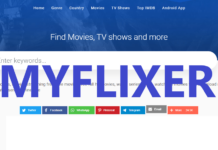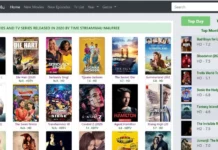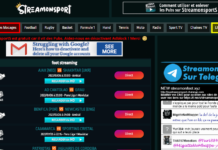
Nowadays, starting an online TV channel is much more accessible than ever, and starting your own TV station is not really that expensive compared to what many people think. Not only the equipment and infrastructure required are cheaper than ever, but you can now use very affordable or even totally free platforms to launch your online TV channel.
However, even though it’s now very easy and affordable, starting a TV channel can still be a daunting process if you don’t know where to start, and this is why we are here to help you with this guide.
Without further ado, let us begin.
Planning Your TV Channel
Before you can start your TV channel, it’s best to do some brainstorming to get a better idea of what you want to offer with your TV channel.
You can start a TV channel for various purposes from simply providing more information or entertainment to supporting an existing business with your channel: the sooner you define this objective and purpose, the better you can plan your TV channel to achieve these purposes.
Consider the details like programming, events, content, timing, and other important aspects of TV channel programming.
Knowing what kind of content you’d like to air can help you in deciding how you will deliver your content:
- Video-On-Demand (VOD): In an on-demand model, your viewer can pick any show or movie they’d like to watch anytime without being tied with a set schedule. So, they’ll get more versatility, including watching on different devices as they please.
- Linear TV: a broadcasting model similar to traditional television where you’ll deliver your content in a set 24/7 schedule. For example, if a show is scheduled to air every Monday at 6 PM, then your viewer must stick on your channel on this schedule, or record the show to watch it later.
With advanced video hosting and online TV platforms like Viloud, you deliver your content both in a linear and on-demand model with ease. You can build a 24/7 online linear TV channel with continuous programming simply by dragging and dropping your video content into the scheduler grid–no need for heavy technical knowledge and skills.
Figuring Out Your Monetization Model
You should also plan how you are going to monetize your content, at least to cover the operational expenses of running the TV channel, but if you can make some profit while at it, why not?
There are three main monetization models you can choose from:
- Subscription-based: your viewer must pay a certain subscription fee before they can access your TV channel. Netflix or Disney+ are good examples of online TV platforms with a subscription-based monetization model. The main advantage of this model is that you can get a consistent source of revenue, but you’ll need a good amount of high-quality content to justify your subscription fee.
- Transactional-based: you charge your viewer a certain fee for them to watch a specific show, just like the pay-per-view model in traditional TV. You can combine it with a subscription model or an ad-supported model.
- Ad-supported: You are broadcasting your content for free, but you display ads in between your content. You can also combine this model with a subscription-based model by allowing your viewers to pay a subscription fee if they don’t want to view ads. Quite popular lately due to the implementation of programmatic ads in online TV.
You should choose the right monetization model mainly based on your target audience’s preferences.
Choosing a Platform for Your TV Channel
Once you know what you’d like to do with your TV channel, it’s time to put together everything to start the TV channel.
There are several different options you can choose from in creating your online TV channel:
- Develop your own website and app
You can definitely build your own website and video platform if you have the technical know-how and/or have the budget to hire a professional developer.
While this option will provide the most freedom regarding the type of content you want to publish and how you’ll monetize your content, it is also the most difficult and it can take some time to build your platform (even if you have the budget).
- Using free social platforms
For example, you can start your TV channel right away by creating a YouTube or Twitch channel for free.
This option is typically the easiest and you’ll also have the benefit of reaching out to the platform’s massive audience base. However, you’ll also have the least freedom in monetizing your content and the types of content you can publish.
- Using professional video hosting platforms
For example, with Viloud you’ll get benefits like:
- Personalization: you can easily customize your website/app and the Viloud player with your brand’s logo, color schemes, and add links to your social media as needed. You can do this with Viloud’s drag-and-drop editor so you don’t need any programming skills to personalize your TV channel
- Versatility: you can host both linear and on-demand channels with Viloud, and you can make some and even all of your content available in both channels.
- Organization: with Viloud, everything is organized so you can easily find any content whenever you need them. You can either store your videos in Viloud’s cloud storage or you can also host your videos on your preferred video CDN or platforms like YouTube or Vimeo, and embed the links to Viloud.
Conclusion
While starting an online TV channel is not fairly difficult and expensive with today’s standards, the competition in the niche can be quite tight thanks to the low barrier of entry. Having a clear plan, investing in the right infrastructure, and using the right platform is very important if you want to achieve success in broadcasting your own online TV channel.











